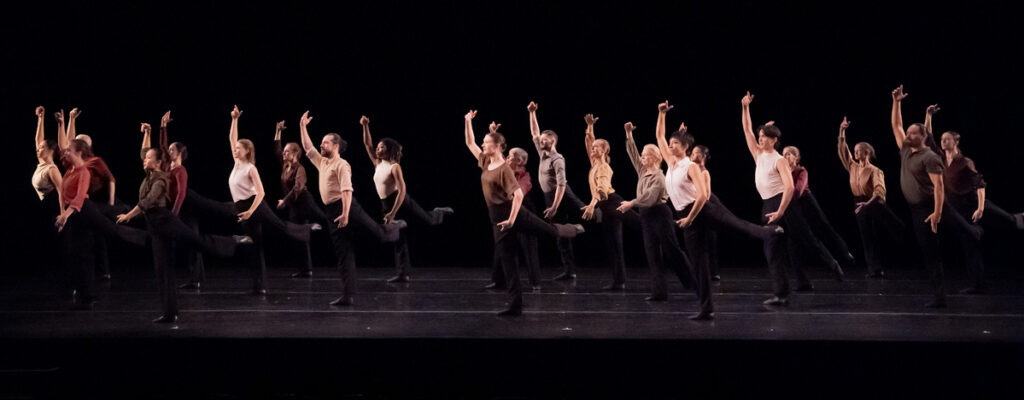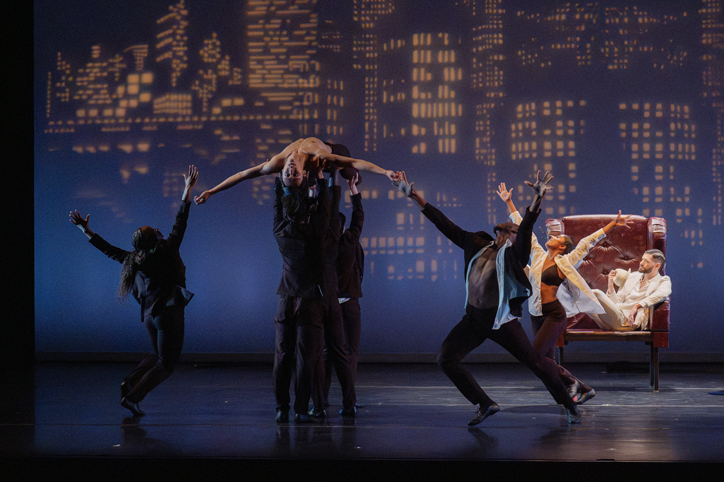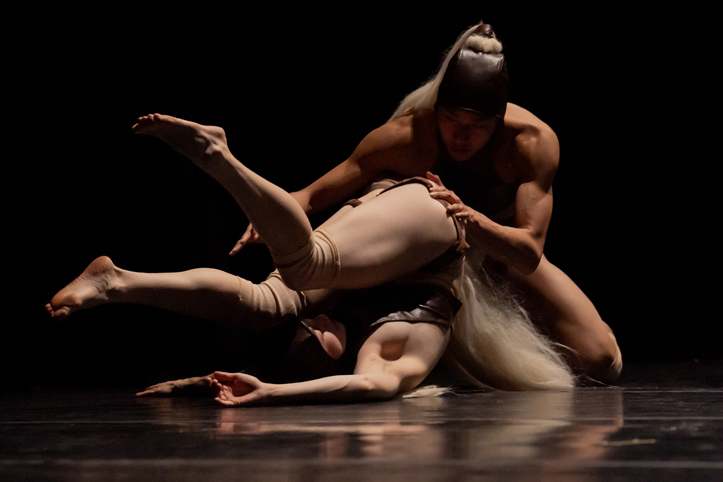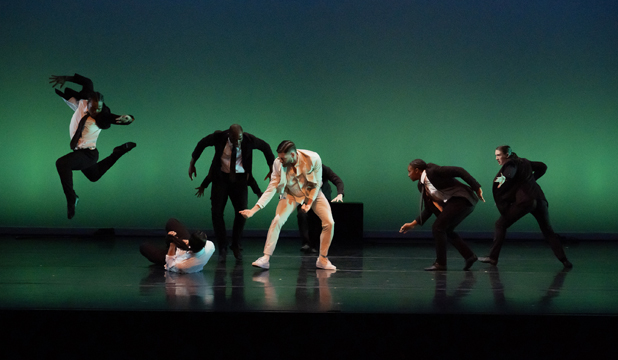By Alix Cohen
Chaconne (1942- José Limón) is inspired by a dance originating in Mexico during the Spanish occupation. On stage are dancers from the current company, older alumni, LaGuardia High School students and members of the family. Austere movement with considerable arm work is executed by multi-generations with varying skill. Violinist John Marcus skillfully plays J.S. Bach’s Chaconne from Partita No. 2 in D Minor.

Chaconne
The Emperor Jones (1956 José Limón) Music: Heitor Villa-Lobos
Eugene O’Neill’s 1920 play is about the self-proclaimed, magician/emperor of a Caribbean island whose people revolt. Brutus Jones flees into jungle where he hallucinates the island’s Colonial past. Having declared he can only be killed by a silver bullet, he becomes an instrument of his own demise.
Artistic Director Dante Puleio and theater director/dramaturg Dominique Rider have set tonight’s piece in contemporary times, placing it in a city. While subtle background projection makes this clear, graffiti-like stock market symbols on three freestanding panels (I read about these) appear as mere decoration seen from the audience. (Peta McKenna) Lighting doesn’t help. (Corey Whittemore)
Costumes (Márion Talán del la Rosa) have changed from ersatz militaristic to updated I don’t know what. The emperor’s apparel mixes a velvet jacket with cheap looking cotton pants. A holstered gun hangs down suggestively in front, not at the side. His nemesis (Colonialism?) is dressed all in white- rather tropical. Overall visual impression is confusing.

The Emperor Jones
Jones (Johnson Guo) sits in an enormous leather chair. Citizens dance around him, then attack or dream of attacking. The emperor preens and struts, examining his gun for readiness. Choreography is sharp edged. Knees are predominant. There’s no sense of danger.
The man in white (Joey Columbus) confronts Jones, pushing away the gun. The adversaries pull one another off the throne and a soap box. Physically close choreography creates subtext of homoeroticism. Jones is carried away by the crowd. We neither see nor hear a shot fired. Specifics would have made the story more comprehensible. Both dancers are excellent.
Jamelgos (World Premiere –Diego Vega Solorza) Music- Ebe Oke
After a brief prologue wherein two muscular men morph into a centaur, a regiment of Greek/Roman -inspired soldiers command the stage. Splendid, updated costumes are brief and strapped with leg wraps and white horses tails swinging from helmets and bikini bottoms. (Julio Cesar Delgado)

Jamelgos
The program describes Jamelgos as an embrace of “queer masculinity.” Movement is spiky and severe. Positions often freeze. Figures project discipline and ferociousness. Choreography is arresting, sculptural, but repetitious. Couples eventually come together in what Solorza calls “the soft side of masculinity”, fluidly entangled on the floor, becoming an orgy. The company exudes pride and precision.
Limón believed men should be more prominent in modern dance. This program’s choices show a side of him that came to fore when possible in art, but otherwise remained discreet.
Opening: The Emperor Jones
Photos by Hisae Aihara
Limón Dance Company
Founded in 1946 by José Limón and Doris Humphrey
Artistic Director Dante Puleio
Executive Director – Michelle Preston
Though October 19, 2025
The Joyce Theater 175 Eighth Avenue
https://www.joyce.org/performances/limon-dance-company-zmh4


